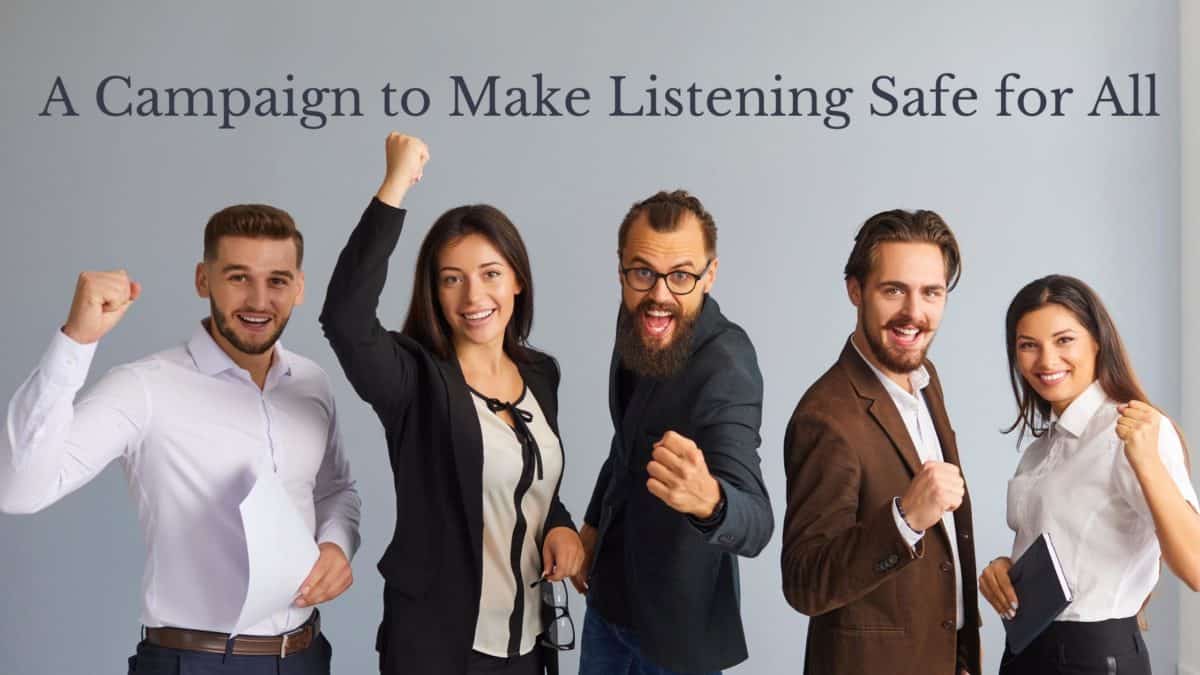0% financing available. Up to 3-year loss and damage guarantee.

A Campaign to Make Listening Safe for All
- Navigating the Conversation: The Significance of Thoughtful Disclosure in Hearing Loss - December 10, 2023
- The Sound of Dreams: Understanding How Hearing Loss Impacts Dreaming - November 7, 2023
- Traveling Effectively with Hearing Aids - October 16, 2023
!While most people associate hearing loss with old age, it is vital to remember that hearing loss can strike anyone at any age. With increasing traffic, construction, and other noise seemingly continually flooding into our ears, it’s more vital than ever to understand the threats to our ears.
The World Health Organization has launched the “Make Listening Safe Workgroup” to promote awareness and take action against an increasing population of young people suffering from hearing loss. This effort aims to raise awareness about hearing safety and establish rigorous criteria to protect the general public. Hearing tests from 2011-2012 were collated by the Centers for Disease Control and indicated that 10 million adults under the age of 70, or 6% of the entire population, had hearing loss caused by excessive noise.
Noise-induced hearing loss
When noise exceeds 85 decibels, it damages or destroys the tiny hairs and cells of the inner hairs, known as cilia, in the inner ear, causing noise-induced hearing loss (NIHL).
Damage to the inner ear can develop at 85 dB over an eight-hour workday. As the decibel level rises, more damage can be done in a shorter period. Engine noise, such as that produced by a motorcycle or chainsaw, is around 100 decibels, which can cause harm in less than 30 minutes. A gunshot can reach 130 dB, inflicting immediate, lasting hearing impairment. The more we understand the dangers around us and put safeguards in place, the better we can protect our priceless and vulnerable hearing.
Who is the most vulnerable?
It is critical to recognize that NIHL is irreversible once it has developed. Thus it must be addressed seriously. Hearing loss affects how we communicate, which affects our relationships, both at home and work, in addition to making it difficult to hear. When we struggle to communicate, our self-esteem, mental health, and sense of independence suffer.
One of the most significant hearing loss hazards that many individuals in today’s world are exposed to. Due to the improper use of personal audio devices, 1.1 billion teenagers and young adults worldwide are in danger of hearing loss. Because everyone uses them, earbuds and headphones may appear harmless, yet the decibel level emitted can easily exceed 100 dB. Personal listening devices are one of the most significant hazards to the hearing of people of all ages because of the length of time individuals choose to stream content.
Recommendations
According to recommended listening habits, the maximum exposure should be under 80 decibels for 40 hours. Workplace noise, street noise, and personal listening devices fall into this category.
Your employer’s responsibility is to measure the amount of noise in the workplace and offer hearing protection to all employees. You can use apps on your smart devices and PCs to monitor the decibel level in space to verify that you are within safe listening levels whenever you fear your hearing is at risk.
However, monitoring and controlling the listening levels on personal listening devices are complex. The World Health Organization (WHO) published “Guidelines for safe listening devices/systems” in 2018, stating that the weekly sound amount from portable music players should be limited to the equivalent of 75 to 80 dB for 80 hours per week. The current WHO effort aims to limit the maximum output of personal listening devices to 95 decibels.
Good hearing practices
For now, it is crucial to follow the habit of safe listening and protect yourself and others from lasting hearing damage. When listening to headphones, keep the volume below 60% of the possible volume and take a break every hour.
For more information about how to keep your ears protected, contact us! If you suspect you have hearing loss, we can assist you in evaluating your options and determining the best solution for your circumstances.
